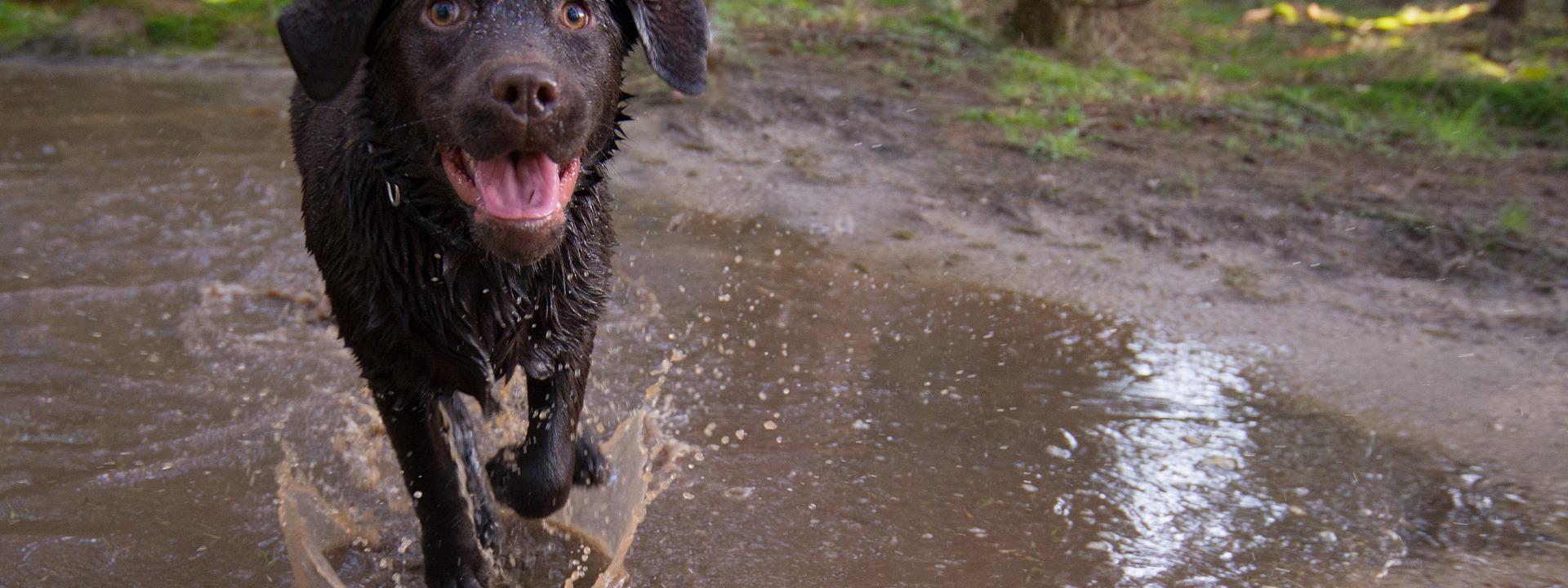- During walks, keep your pet on a short leash, not off-leash or on a retractable lead. The majority of snakebites occur when a pet is far from their owner.
- Avoid rocky or dense brush and grassy areas. Choose wide trails over narrow ones.
- Tidy up your yard. Keep your grass cut short and eliminate brush, tools, toys, and rock piles. All make excellent snake hiding and sunning spots.
- Keep your yard clean of items that attract rodents (which in turn attract snakes), such as food, fruit, and birdseed.
- Snakes can get under fencing that does not have a solid cement base. You may want to install hardware cloth along the entire base of your fence, including across any gated areas.
- If you encounter a snake, calmly and slowly back away from it until you are no longer within striking distance (about half the length of the body). Then carefully leave the area immediately.
- Do your homework and learn what snakes are found in your area. If a bite occurs, being able to recognize what type of snake it was can make a huge difference in your pet’s survival.
- If you live in an area where rattlesnakes are common, you may want to give your dog the rattlesnake vaccine.
- Did you know all snakes can swim? You may want to reconsider playing fetch in the water; some snakes can bite underwater when startled. Use caution when enjoying activities such as canoeing, fishing, and rafting to avoid areas that snakes may use for sunning. Avoid drifting underneath tree branches; some snakes like to sun themselves on them and will drop into the water (or canoe) when they detect motion.
Should a Snakebite Occur:
- Know the signs! Immediate symptoms almost always include:
- Puncture wounds (with possible bleeding)
- Severe pain
- Swelling
- Restlessness, panting or drooling
- Difficulty breathing
- Head to the nearest veterinary hospital immediately. Snakebites are always considered an emergency, and every minute matters. A venomous snakebite can be fatal if not treated immediately, and even a bite from a nonvenomous snake can pose a danger. Carry the pet to the car rather than having them walk.
- Keep your pet quiet and calm on the journey to the vet; this means staying calm yourself too. If (and only if!) you have a second person with you, you can try to reduce the rate that venom spreads through the pet’s body using these methods:
- Bathing the wound with cold water controls swelling.
- If the bite wound is on a limb, apply a tourniquet using a tie, stocking, or another strip of cloth. Make sure the tourniquet is between the bite and the pet’s body. Loosen it for approximately half a minute every five minutes.
- If possible, keep the location of the bite below heart level.
- Remember, only attempt first aid if you have a second person riding in the car with you; it wastes precious time otherwise.
Personal Safety
Don’t forget to keep your own personal safety a priority and never try to handle a snake even if it appears dead. 80% of snakebites affecting humans occur when they are trying to handle or kill a snake. Some snakes can still bite for hours after death because of lingering nerve reflexes, even if the head is severed from the body.

